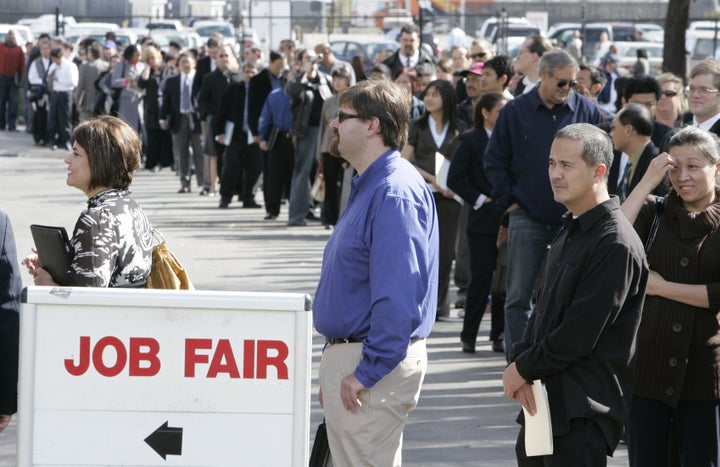
Research assistance by Cara Parks
The Huffington Post has developed a new feature that aims to provide a more accurate gauge of what is happening in the lives of millions of Americans as a result of the ongoing economic hard times.
We're calling it the Real Misery Index.
The original Misery Index is a formula created by economist Arthur Okun that adds the current unemployment rate to the yearly increase in the consumer price index (a measure of inflation). It's an easily digestible number that the media loves to use to give a snapshot of how well or poorly the economy is doing.
Unfortunately, it's not a very useful statistic. For starters, the unemployment statistic traditionally used represents only a fraction of the jobless since it doesn't include part-time workers and those who have given up looking for work. Moreover, the consumer price index has been criticized for under-emphasizing essential goods such as food and gas.
Also, the original Misery Index doesn't include a whole host of economic indicators that have a huge impact on the actual well-being of millions of Americans -- factors like the number of people losing their homes, losing their health care, and going bankrupt or defaulting on their credit cards. The rise in the cost of gas is important -- but what does it matter if you don't have a home to heat or a car to drive?
So, after consulting with experts who study economic trends, and receiving suggestions from many of our readers, we have created the Real Misery Index. It combines a more accurate unemployment statistic (the U6 formulation), with the inflation rate for three essentials (food and beverages, gas, medical costs), and year-over-year percent increases in credit card delinquencies, housing prices, food stamp participation, and home equity loan deficiencies.
To formulate our index, we gave equal weight to the broad unemployment numbers and the combination of the other seven metrics. Thus, we added the broad unemployment U6 statistic to the average of the seven other statistics.
In the accompanying chart, we've compared the current recession to previous recessionary periods, including 1990-1991 and the 2000-2001 dot-com collapse. (Unfortunately, since some of the statistics we use for our formulation were not available at the time, we are not able to include 1980, during which the traditional misery index hit an all-time peak of 22.)
The traditional Misery Index for the current recession is only 8.1, below the index for the 1991 downturn and barely higher than the 2001 dot-com collapse. But the Real Misery Index for 2009 -- at 29.9 -- is almost three times higher than the index for 2001, showing that the
economy is in much worse shape.
We've also included three related charts, which provide additional snapshots of the state of the economy -- year-over-year increases in bank loan delinquencies (which includes credit cards, home equity loans, auto loans), foreclosures and auto repossessions. We've incorporated some suggestions from readers, including foreclosures and credit-card delinquencies. Other great suggestions, such as utility cut-offs and the number of homeless, are not tracked on a national level or are not accurately counted, and could not be included.
HuffPost's Real Misery Index will be updated each month, as soon as the relevant statistics become available.
But this remains a work in progress so, by all means, feel free to make recommendations, suggest other statistics and point us in the direction of other useful resources. Send your suggestions to misery@huffingtonpost.com.
In addition, these charts show related trends that reflect the state of the economy.